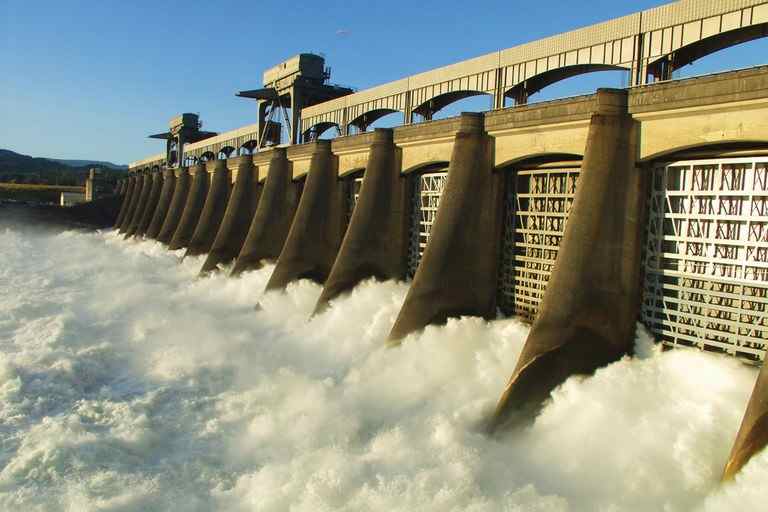forum
library
tutorial
contact

Hydro in the Pacific Northwest:
The Region's Electricity Powerhouse
by Elizabeth Ingram
HydroWorld, August 15, 2018
|
the film forum library tutorial contact |

|
Hydro in the Pacific Northwest:
by Elizabeth Ingram
|
 When it comes to hydropower in the U.S., the Pacific Northwest of the country is a powerhouse. What makes this region so unique? Read on for just a couple of perspectives.
When it comes to hydropower in the U.S., the Pacific Northwest of the country is a powerhouse. What makes this region so unique? Read on for just a couple of perspectives.
According to the Northwest Power and Conservation Council:
"Hydropower has a long history in the Pacific Northwest and particularly in the Columbia River Basin. The first hydroelectric dam in the Pacific Northwest was built in Spokane [Wash.] in 1885. In 1889, the first long-distance transmission of electricity in the Northwest began in Portland, where a direct-current line was built from a small hydropower plant at Willamette Falls to light street lights downtown, a distance of about 13 miles.According to the Pacific Northwest Waterways Association:Beginning in the late 1930s, the production of hydropower was the primary instrument of economic change in the West, according to historians Dorothy Johansen and Robert Gates. Nowhere in the West, or elsewhere in the nation for that matter, is hydropower as important as an instrument of economic change or factor in the electricity supply as in the Pacific Northwest. And of all the hydropower produced in the Northwest, the largest share is produced at dams on the Columbia River and its tributaries. Fully 40 percent of the electricity used in the Northwest is generated by federal dams in the Columbia River Basin and sold by the Bonneville Power Administration. The percentage of hydropower increases when non-federal dams in the Columbia River Basin are included, and it rises again with the incorporation of dams in the Canadian portion of the Columbia Basin -- B.C. Hydro sells some power into the U.S. Northwest -- and the addition of federal and non-federal dams outside the basin.
The Columbia River. . . flows through multiple mountain ranges on its 1,214-mile journey to the sea, and these engorge the river and its tributaries with millions of acre-feet of snowmelt runoff every year. Also, the Columbia drops at a fairly uniform rate of about two feet per mile, and much of its course is through solid rock, carved by repeated floods at the end of the last Ice Age. The rocky canyons provide excellent footing for dams.
Today there are 14 dams on the mainstem Columbia River, three in British Columbia and 11 in the United States. Five of the American dams are non-federal. In 1953, President Dwight Eisenhower shifted the nation's power policy from one of federal dam construction to one of encouraging local utilities to build dams on major rivers. Three public utility districts in central Washington, in partnership with investor-owned utilities, took advantage of this shift and built four huge dams on the Columbia during the 1950s and 1960s: Priest Rapids (originally authorized as a federal dam), Wanapum, Rocky Reach and Wells."
"The federal hydropower dams on the Columbia Snake River System have helped to win wars, build industries and make a better life for millions of people. This renewable energy source has a very proud tradition in our region, and plays an integral role in the success of the Northwest by providing power for the region's homes, businesses and industries. It also supports agriculture by providing power for farms and pumping water for irrigation. These multi-purpose projects have also provided effective flood control for Northwest communities, and created new recreational opportunities.Is it any wonder we chose Portland, Ore., as the location for HydroVision International in 2019? This is a great opportunity to learn from owners and operators in the region.The Columbia and Snake Rivers generate 40 percent of all U.S. hydropower and are responsible for generating over 50% of our region's energy."
Click here to learn more about this exciting event, or to submit an abstract for the 2019 conference.
learn more on topics covered in the film
see the video
read the script
learn the songs
discussion forum
